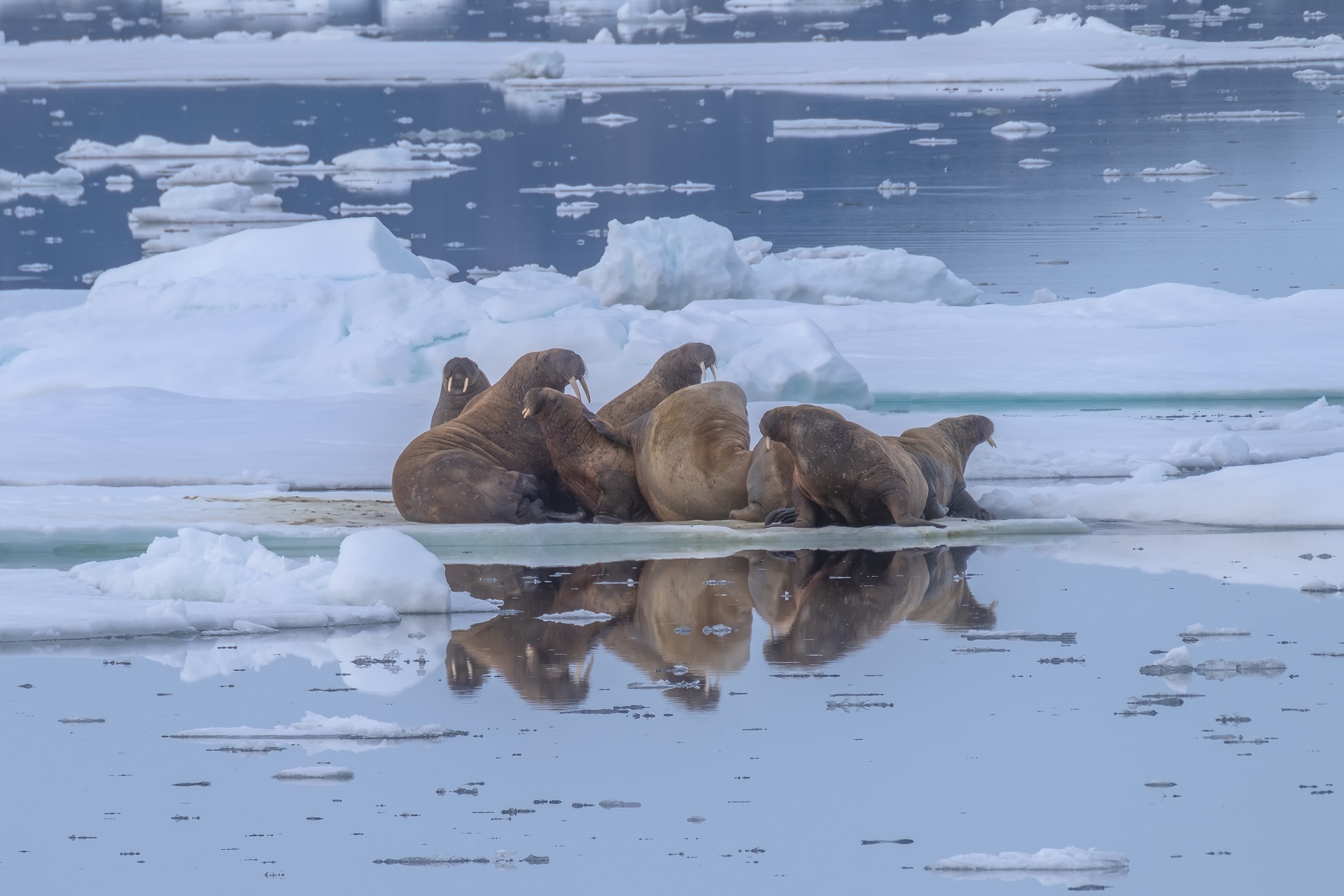
These are the images of walruses in Svalbard. The walrus is an iconic and fascinating marine mammal that can be found in various regions around the world, including Svalbard. Svalbard is a Norwegian archipelago located in the Arctic Ocean, and it is home to a significant population of walruses. Walrus scientific name, Odobenus rosmarus means tooth-walking sea horse.
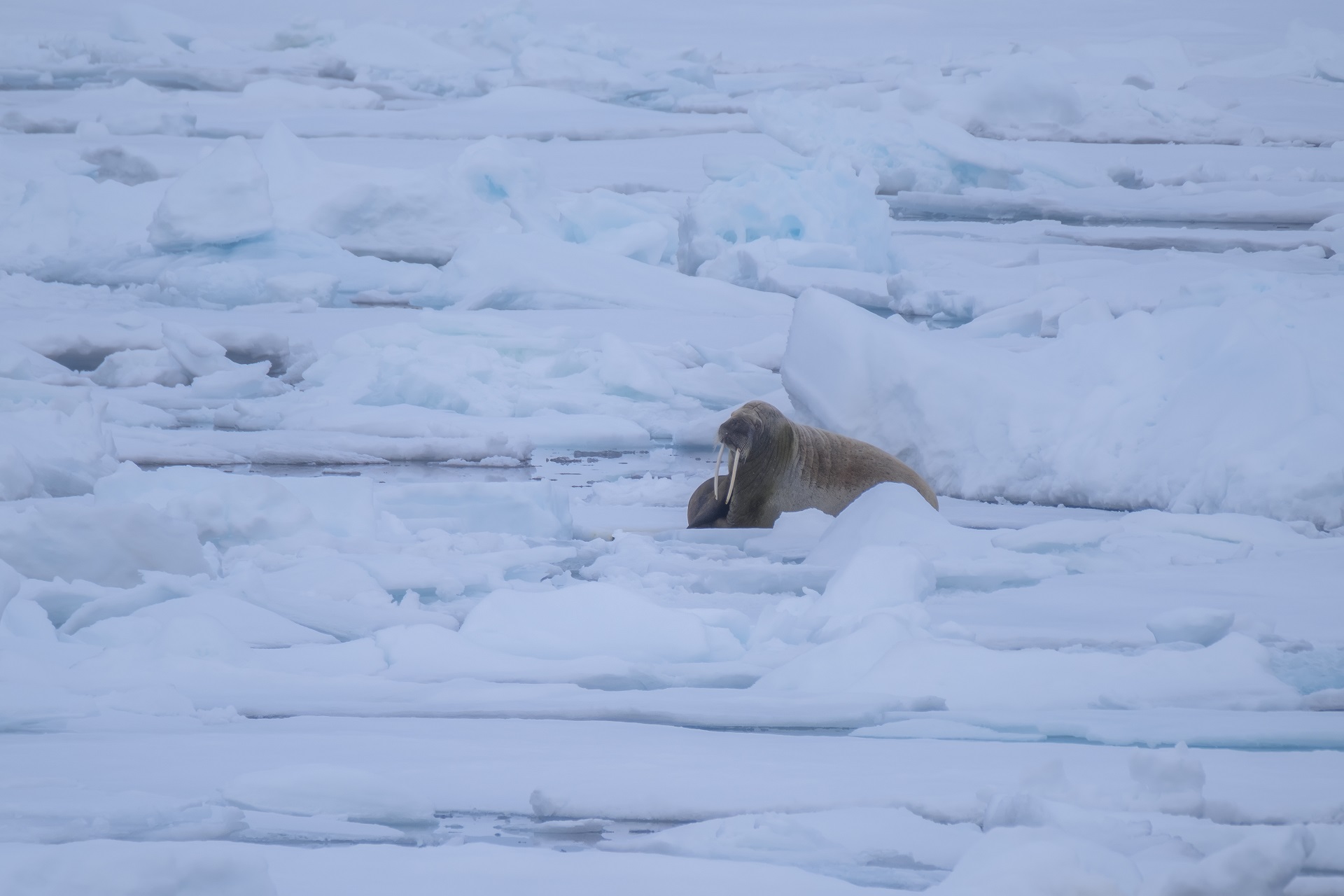
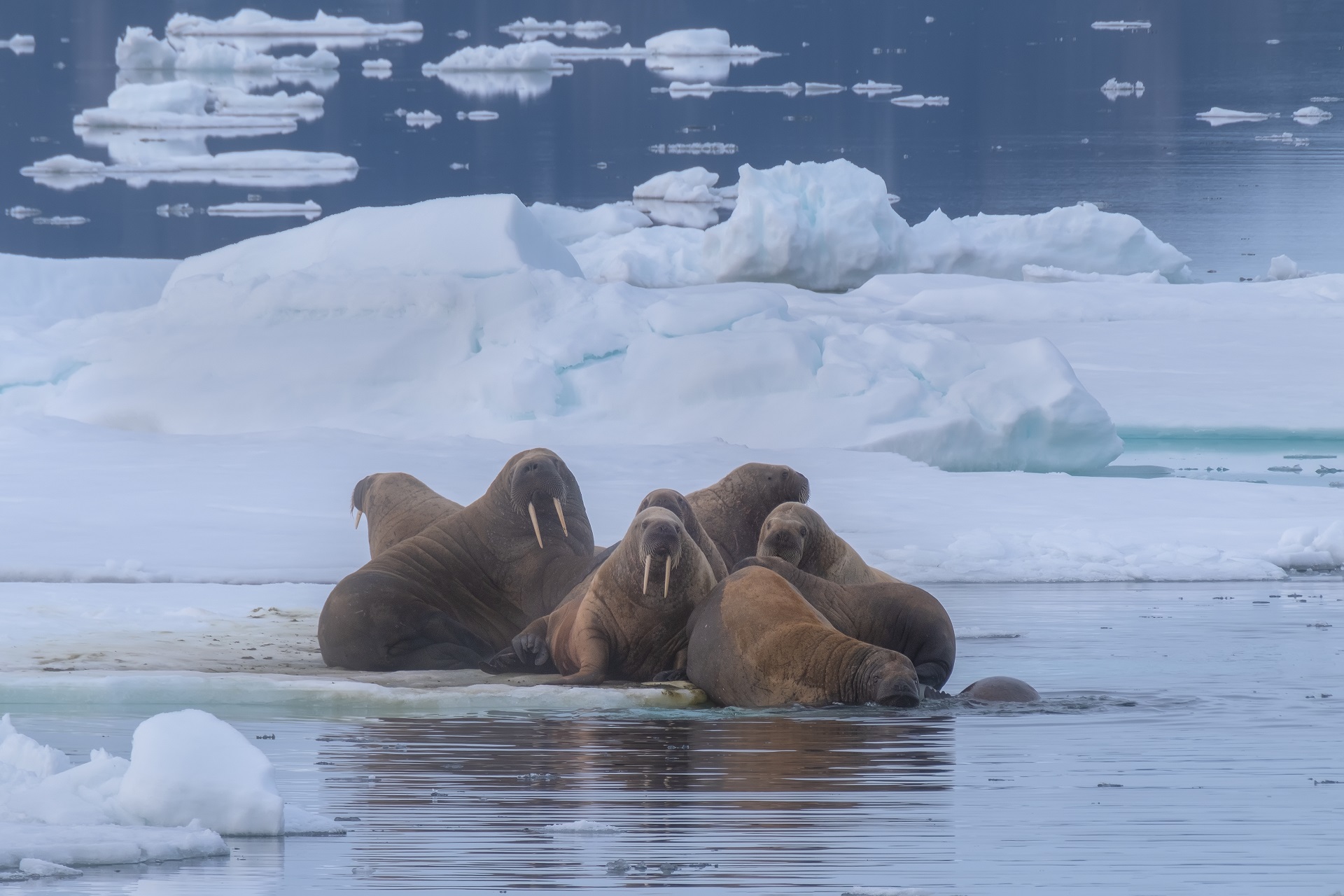
Walruses are known for their large size, their impressive tusks, and their distinctive appearance. Walrus is the real King of Arctic because the adult walrus is typically 7.25 to 11.5 feet in size and can weigh up to 3,000 lbs, which is the weight of small car! Walrus are tough animals, they can withstand the temperatures as low as -31°F (-35°C).
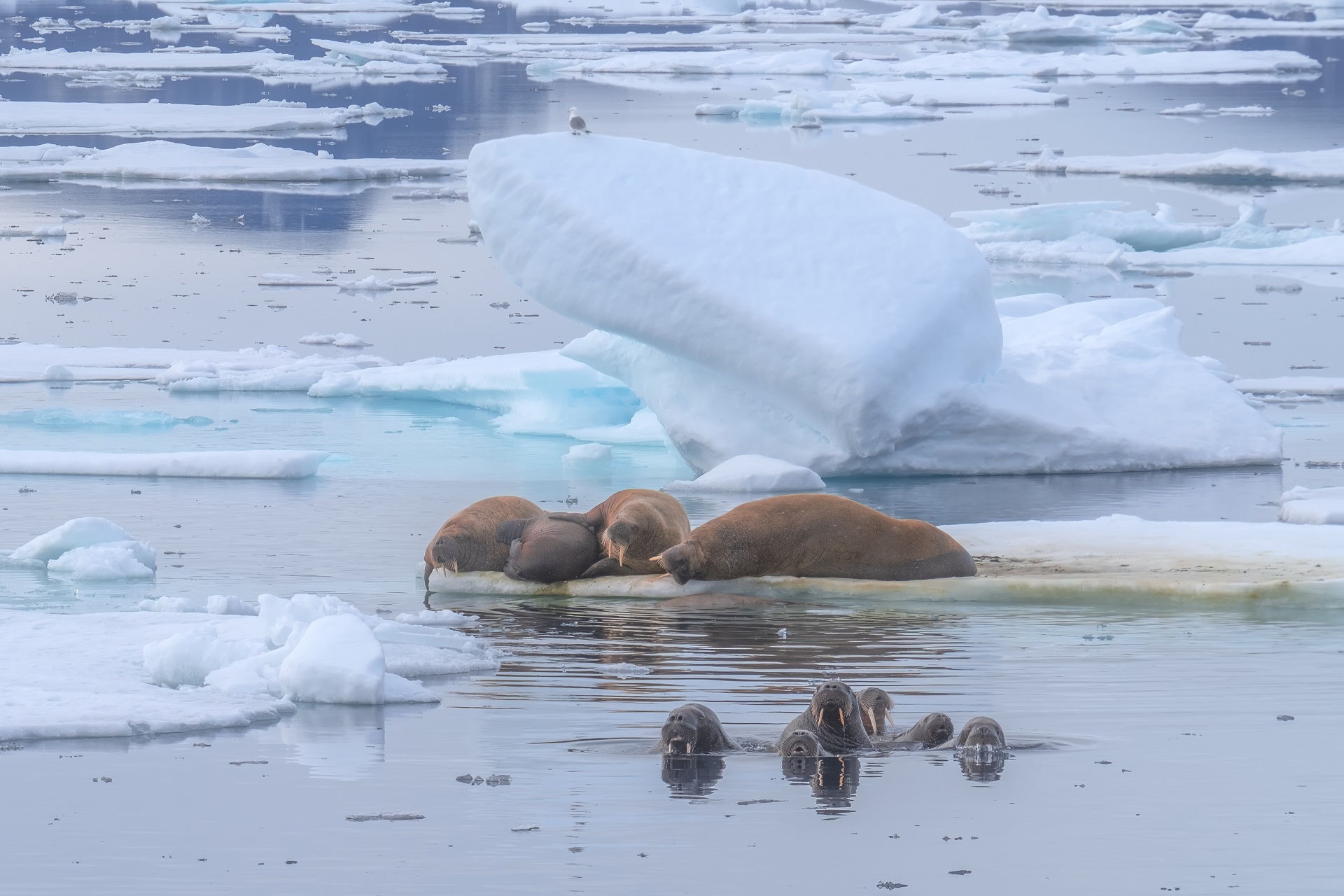
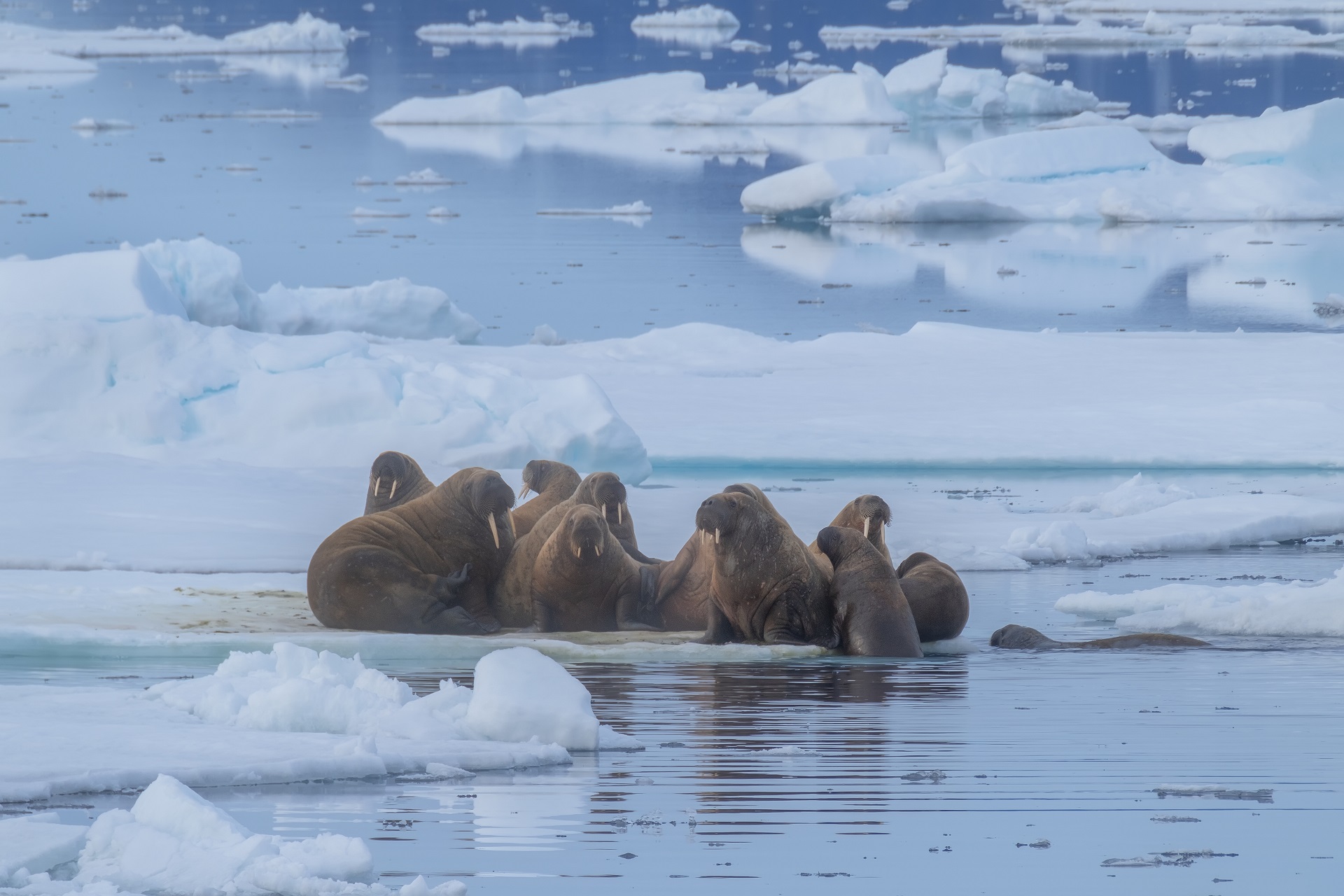
There are two subspecies of the walrus geographically. Pacific walruses are mainly in the seas separating Alaska and the Russian Far East, while Atlantic walruses are in the Eastern Seaboard of North America, around Greenland and on archipelagos such as Svalbard and Franz Josef Land in the Arctic Ocean. The population of the walrus is estimated at 250,000, about 230,000 are Pacific Walruses and only 20,000 are Atlantic walruses. In Svalbard, walruses can be found along the coasts of the islands, where they live in large herds. The walrus population in Svalbard has been estimated to be around 4,000 individuals.
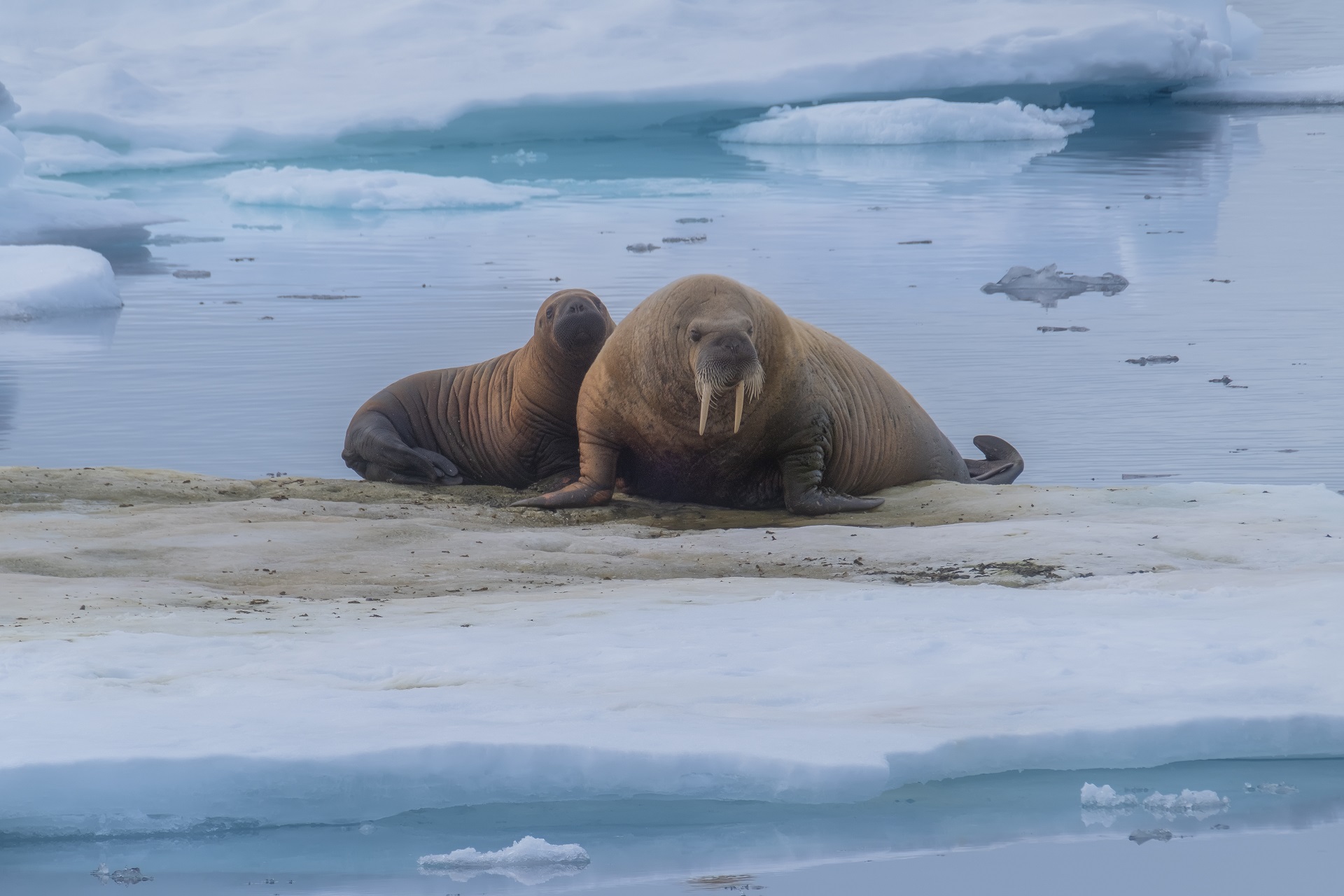
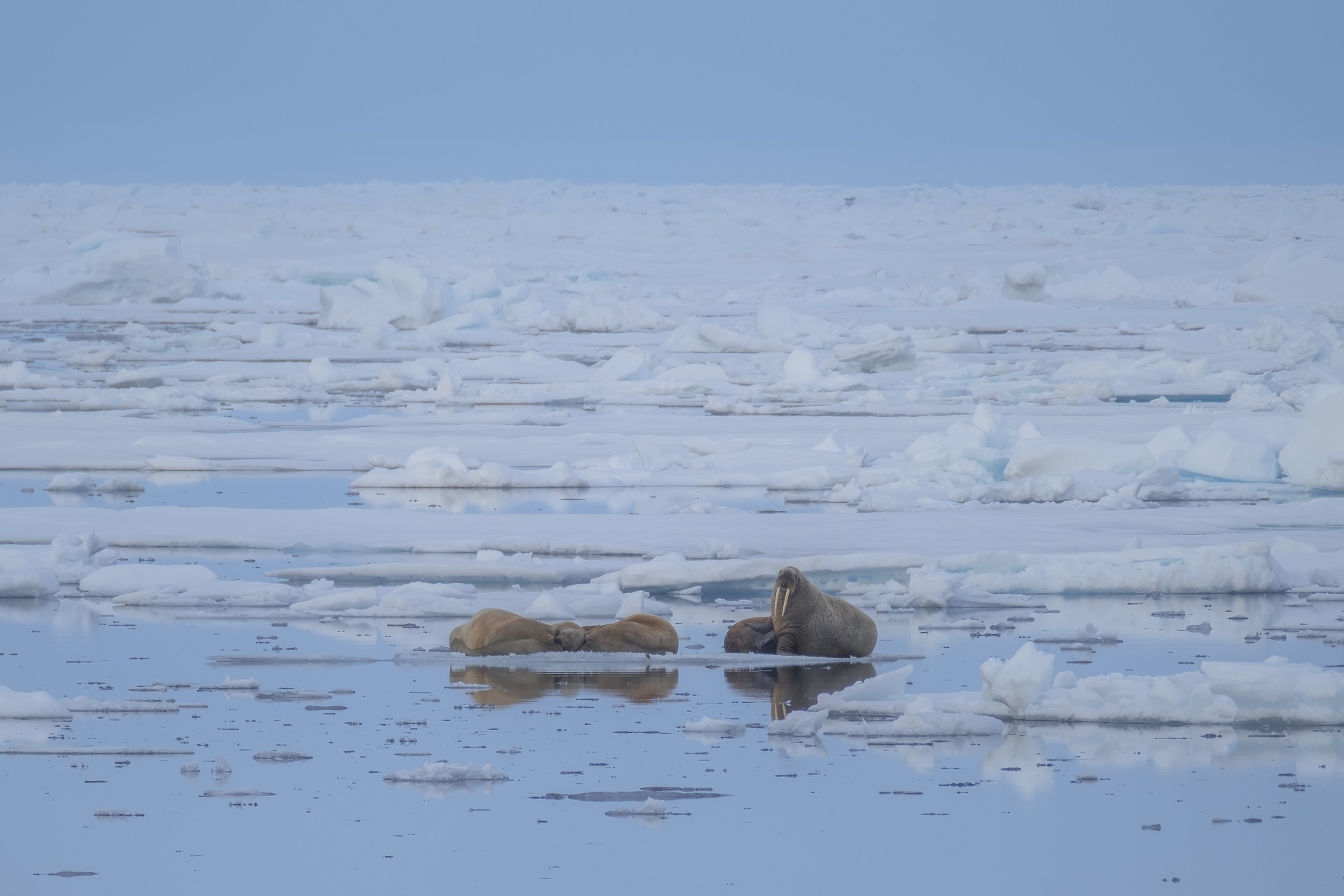
Walruses are social animals, they like to congregate in large groups called “herds”. Herds are usually segregated by gender, females and males have their own herd. One of the most striking features of walruses in Svalbard is their tusks. These tusks are actually elongated teeth that can grow up to three feet in length. Both male and female walruses have tusks, and they use them for a variety of purposes. For example, male walruses use their tusks during fights with other males over mating rights, while female walruses use their tusks to help them climb up onto ice floes.
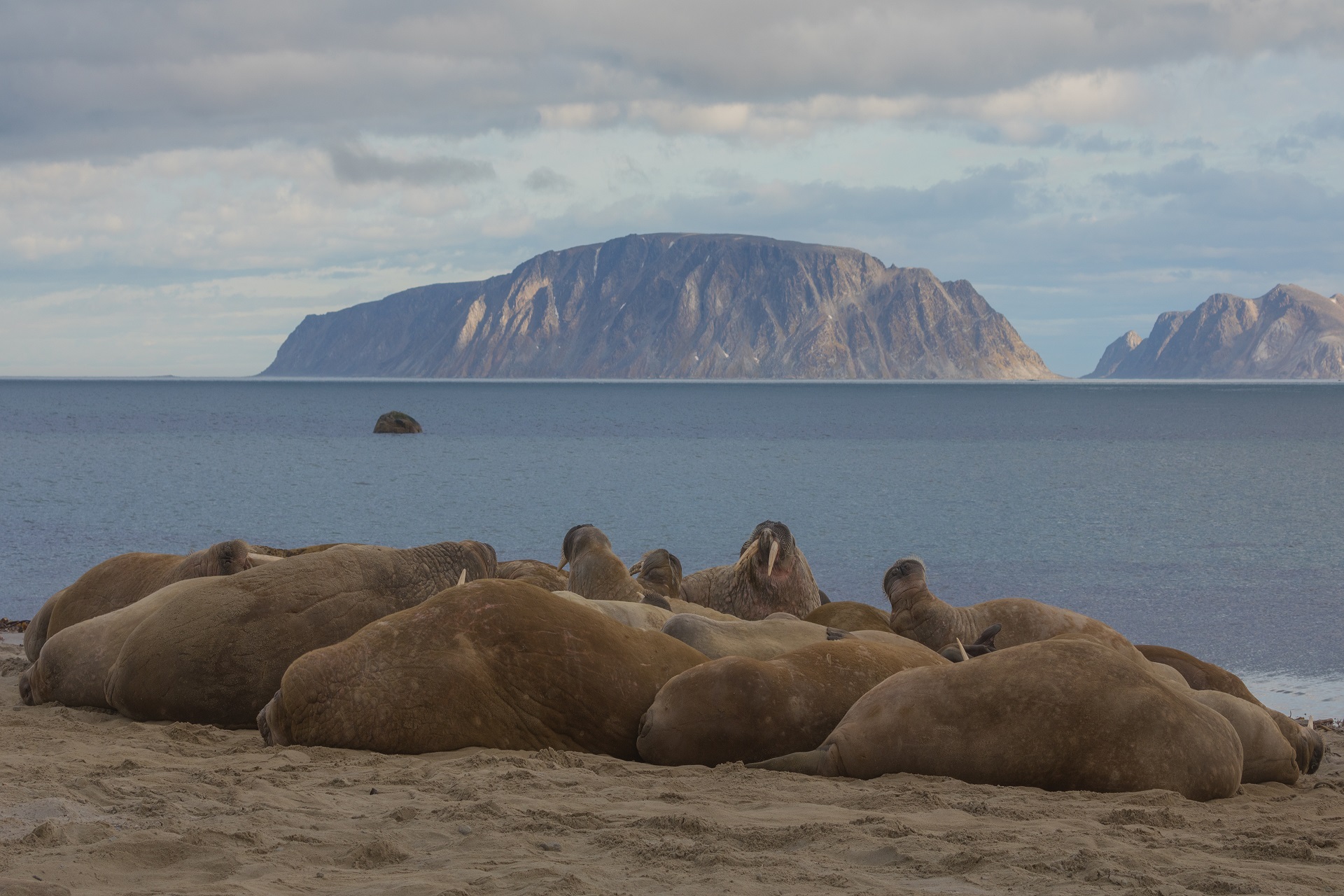
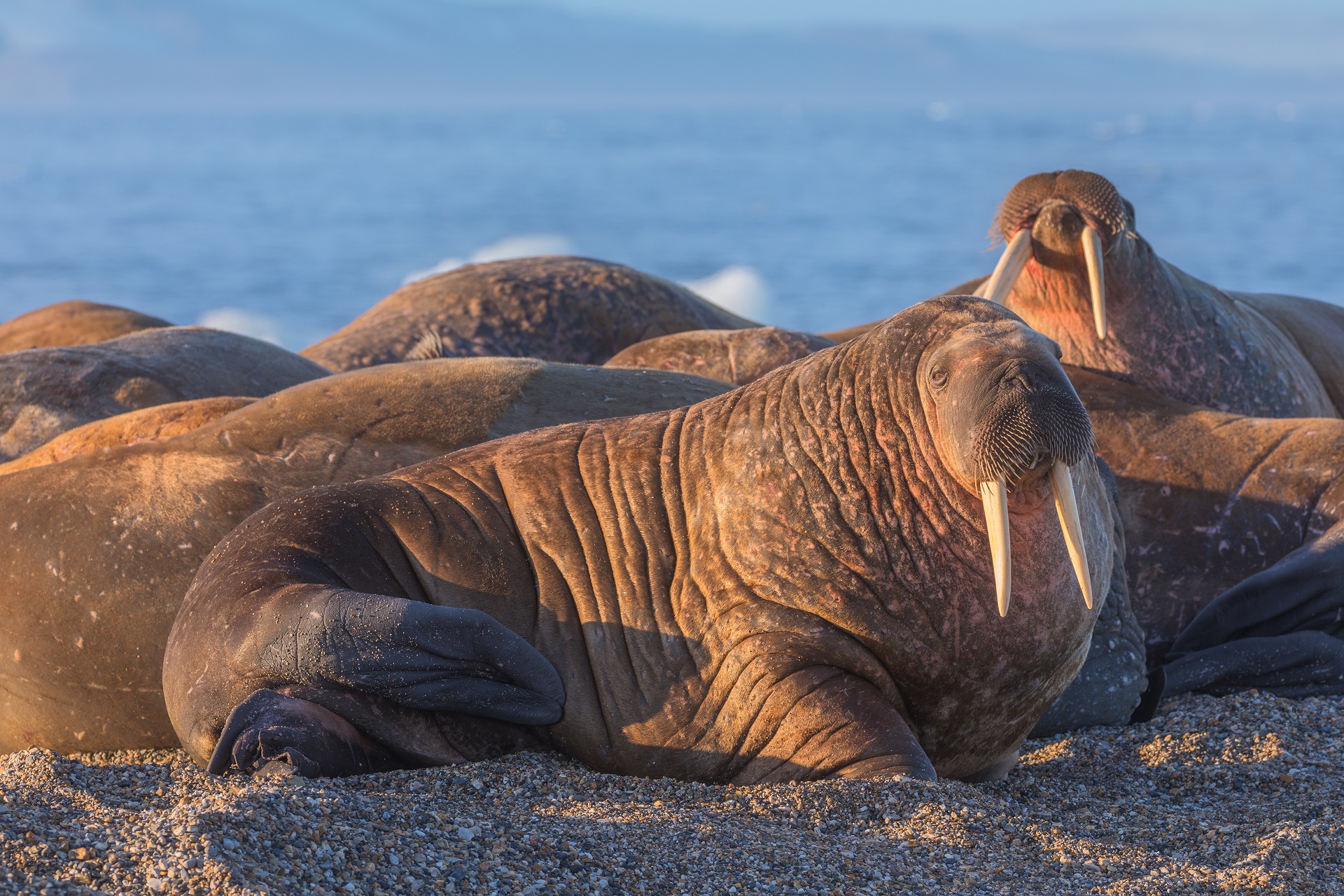
Although they are heavy, they can run quite fast on land – in fact, they can run as fast as humans. They run on all four flippers like dogs. Walrus can dive up to 300 ft (90 m) and stay underwater for up to 30 minutes! They are fast swimmer – at an average speed of 4.35 mph (7 km/h) and up to 21.74 mph (35 km/h).
Walruses in Svalbard are also known for their unique vocalizations. These vocalizations, which include grunts, barks, and whistles, are used by walruses to communicate with one another. Scientists have found that walruses use different types of calls for different purposes, such as to signal danger or to find other members of their herd.
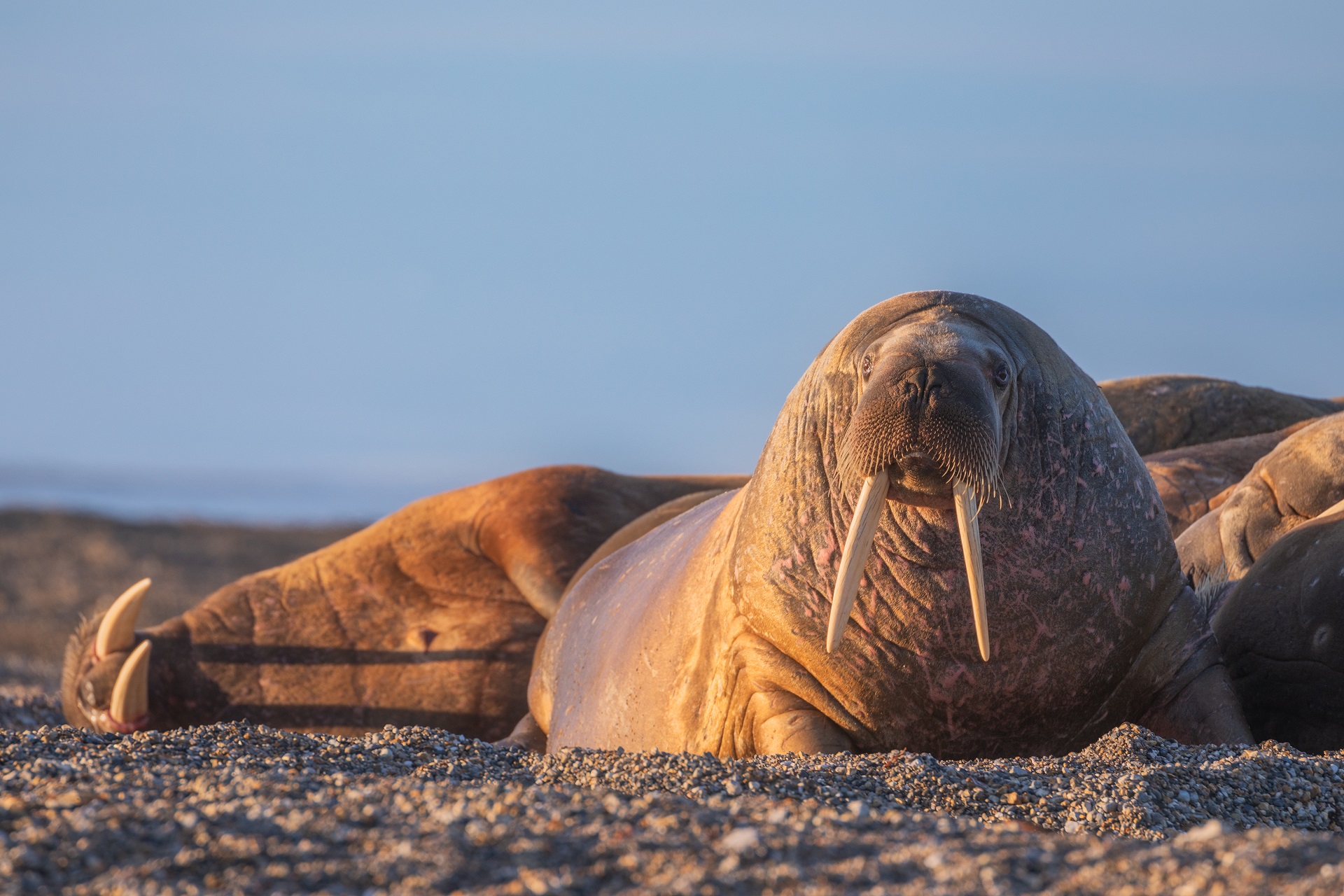
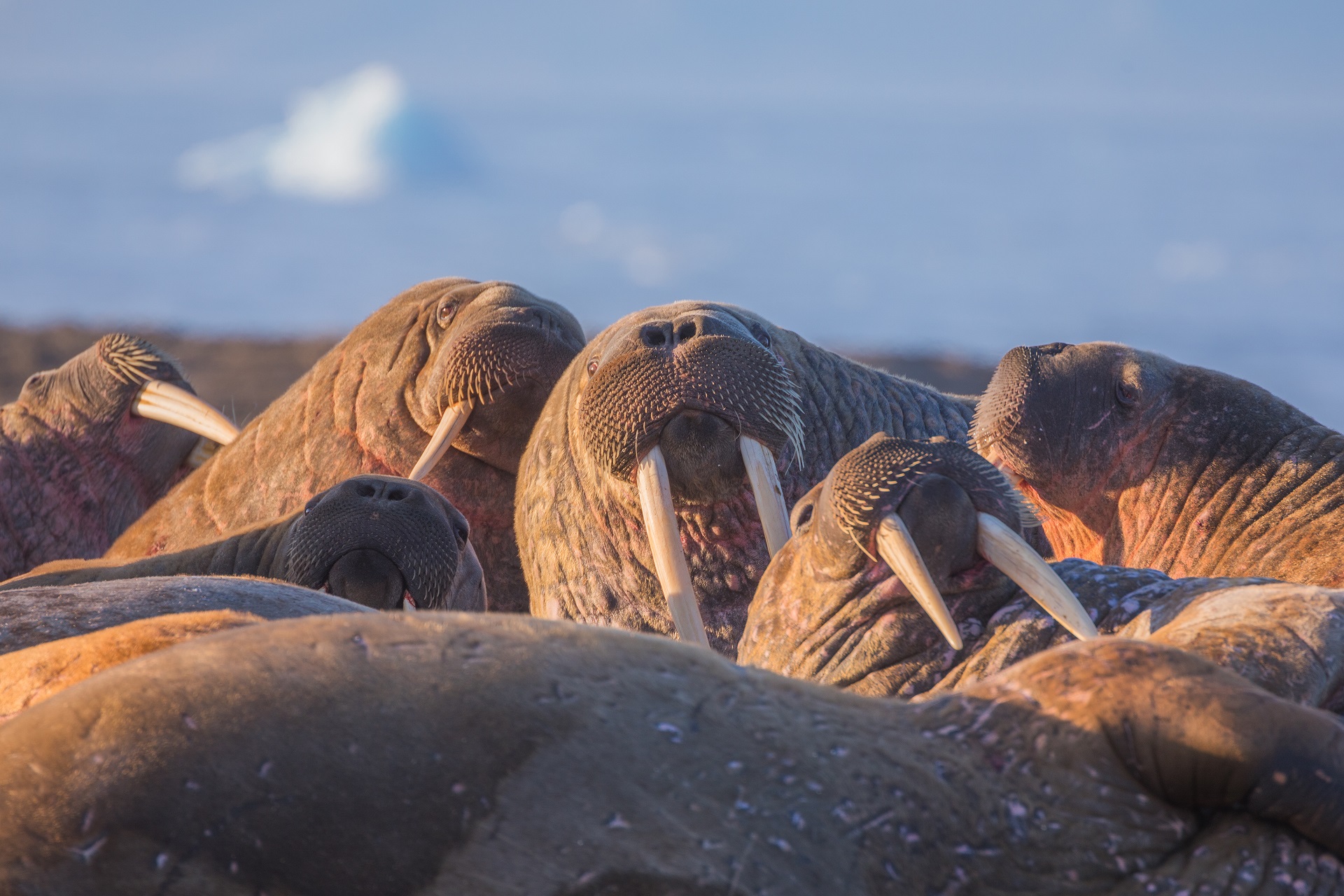
Walruses are an important part of the Arctic ecosystem, and they play a key role in maintaining the balance of the marine environment. They are a keystone species, meaning that they have a significant impact on the other organisms in their ecosystem. For example, walruses help to keep populations of clams and other bivalves in check by feeding on them. This, in turn, can help to prevent overgrazing of important seagrass habitats.
However, walruses in Svalbard are facing a number of threats to their survival. Climate change, for example, is causing the Arctic sea ice to shrink, which is making it harder for walruses to find suitable places to haul out and rest. Additionally, pollution and overfishing in the region are also putting pressure on walrus populations.
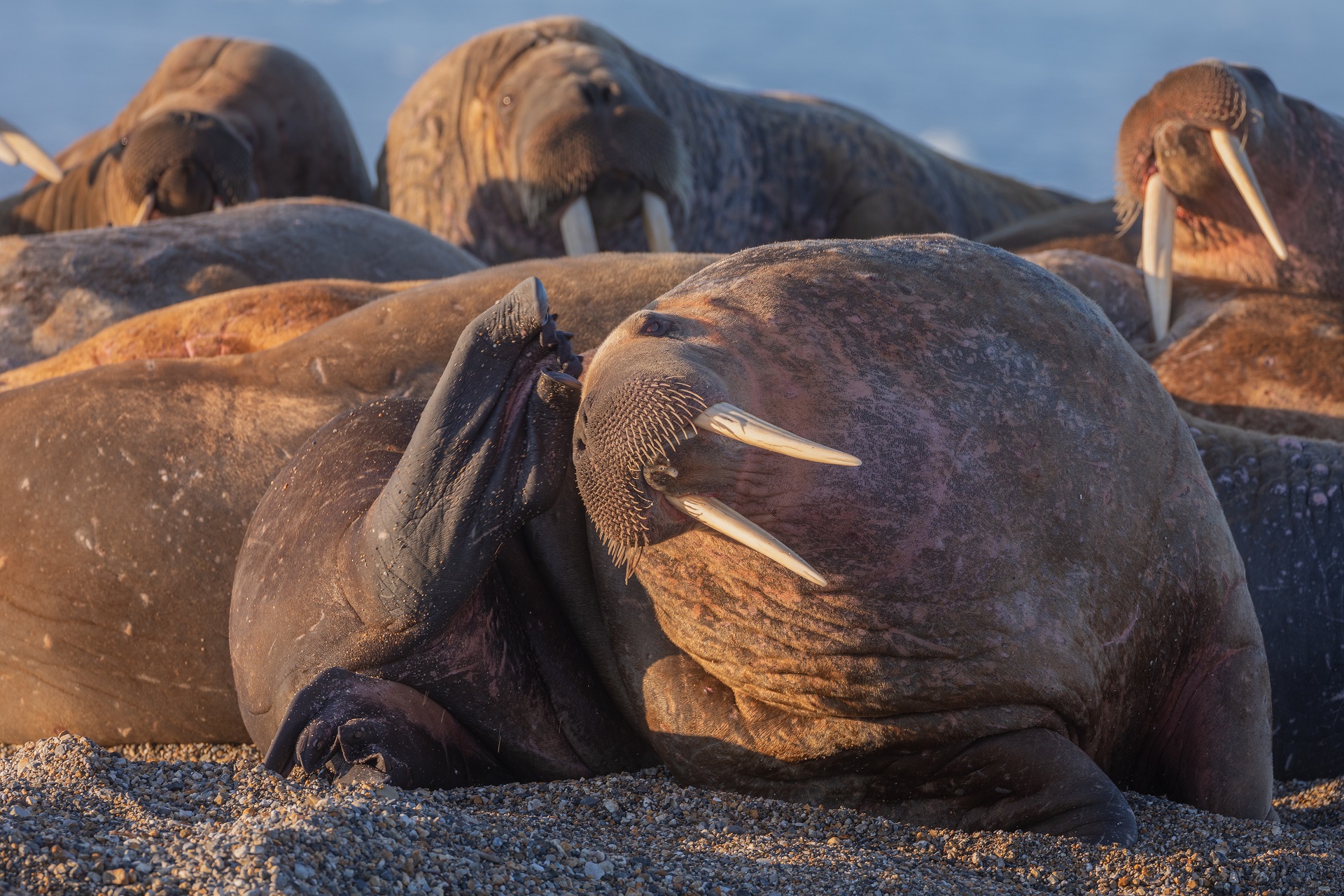
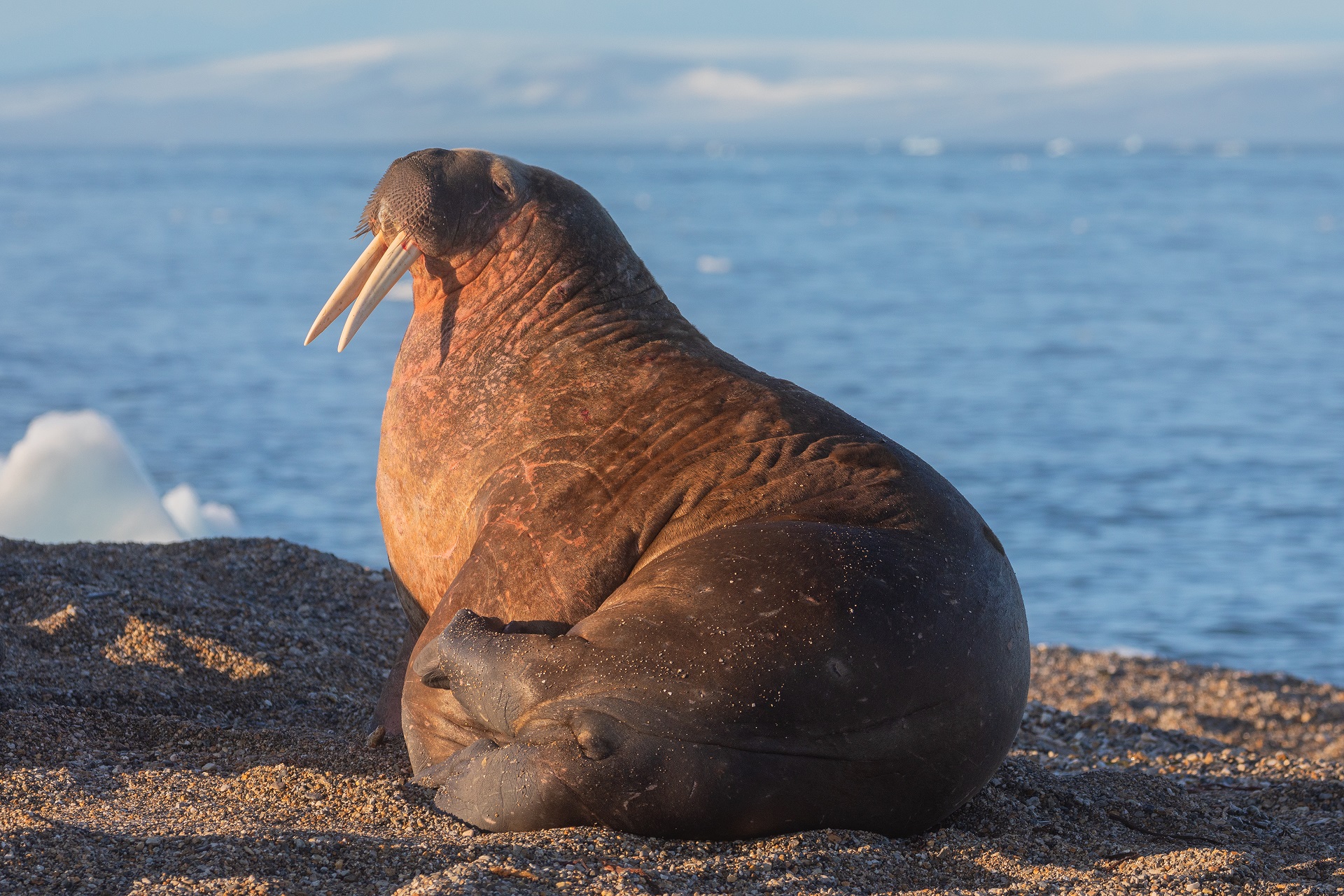
In conclusion, walruses in Svalbard are a fascinating and important part of the Arctic ecosystem. With their impressive tusks, unique vocalizations, and key role in maintaining the balance of the marine environment, these marine mammals are truly remarkable. However, it is crucial that we take steps to protect walrus populations in Svalbard and around the world, in order to ensure that they continue to thrive for generations to come.

